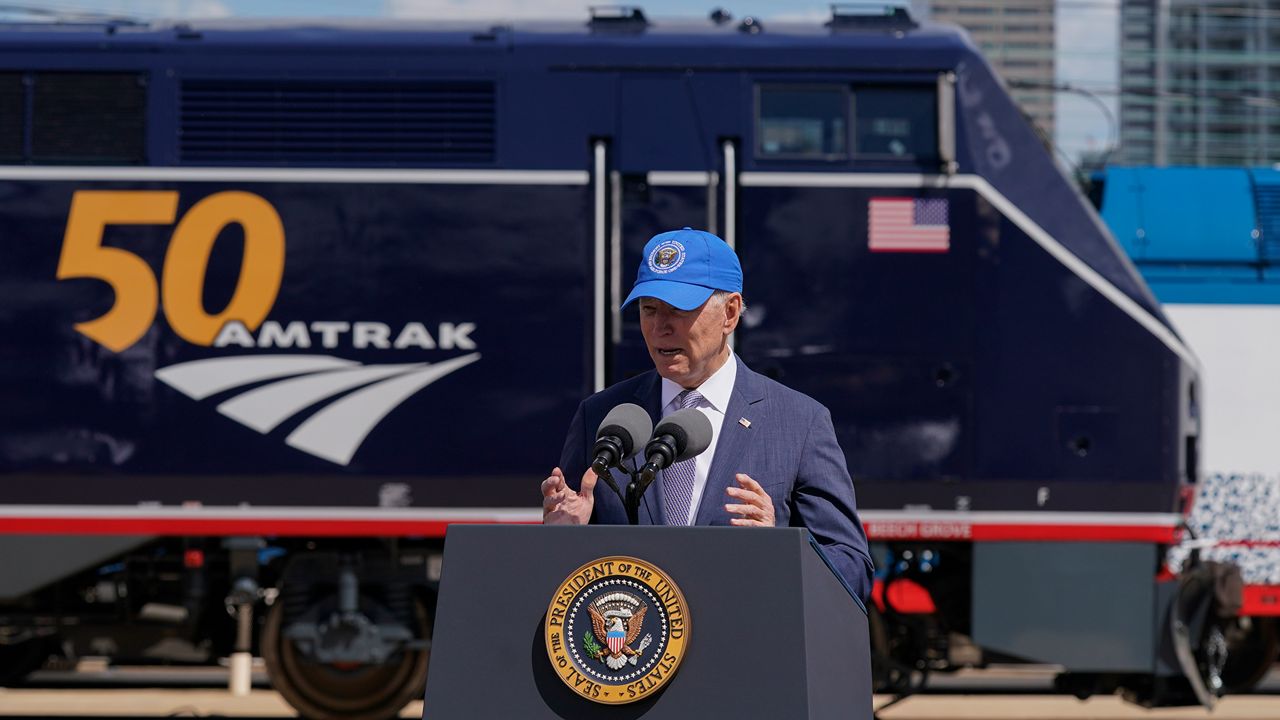TEXAS — Amtrak officials are counting on a massive influx of federal funding to expand service throughout Texas.
Amtrak’s vision for expansion includes more round trips for the “Texas Triangle” regions of Dallas-Fort Worth (DFW), Houston and Austin-San Antonio to link four of the nation’s largest 31 metropolitan areas.
In its Corridor Vision, Amtrak proposes the federal government invest $75 billion over 15 years to develop and expand intercity passenger rail corridors around the nation.
The plan would be implemented in collaboration with states, local communities, the administration and other stakeholders to build upon Amtrak’s national network by integrating new and improved corridors to expand the existing system.
The company's plan to grow rail service across America includes 39 potential new routes and more trips or other enhancements on 25 existing routes, creating the potential to expand or improve rail service for 20 million additional passengers each year by bringing service to more than 160 new communities.
New stations would be built in more than half of the U.S. states as part of an additional $195 billion in economic activity generated by increased capital investment during 2021-2035.
In Texas, the vision for daily service includes three round trips between Houston and DFW, three round trips between Houston and San Antonio and two round trips between DFW and Austin-San Antonio.
The company’s planners have long coveted a new high-speed rail corridor between Dallas and Houston, and a spokesperson said that is still on the table — though she could not specify whether it was a top priority.
Heartland Flyer service from DFW to Oklahoma City and Newton, Kansas, would be expanded from one to three round trips between Oklahoma City and Fort Worth and linked to Texas Triangle services. One Fort Worth to Oklahoma City round trip would be extended to Newton for a connection with Amtrak’s Southwest Chief.
Amtrak President Stephen Gardner and CEO Bill Flynn touted the Heartland Flyer expansion project during a recent conference call as a high priority, saying it would add between 100,000 and 200,000 riders annually and have an estimated $64.8 million annual economic impact.
“We think the opportunities are real,” Flynn said. “They are tangible. The benefits are quantifiable. And the demand and the ridership is there.
Advocates are pinning their hopes on President Joe Biden’s top legislative priority, a massive infrastructure investment package. Biden, who earned the nickname of “Amtrak Joe” because he rode the train almost daily between Washington and his home in Wilmington, Del., during his 36 years as a U.S. senator, has proposed tens of billions of dollars to tackle Amtrak’s repair backlog, improve service along the Northeast Corridor and expand service across the U.S.
But the president and Congress have been straining to reach an agreement, stuck over the scope of the package and how to pay for it. Biden walked away from a Republican-only proposal after negotiators were unable to resolve differences. But now, a bipartisan group of senators is huddled behind closed doors, encouraged by Biden to keep working on the effort.
Democrats have a new deadline to enact President Joe Biden’s economic agenda.
The party will try to pass both a bipartisan infrastructure bill and a broader investment in social programs by the end of October, Senate Majority Leader Chuck Schumer, D-N.Y., told his caucus in a letter Monday. The party aims to approve the plans before the Oct. 31 expiration of major transportation funding programs, which the infrastructure legislation would renew.
To pass what they consider to be a transformative investment in the social safety net and climate policy, Democrats will have to satisfy progressives who thought an initial $3.5 trillion price tag was too small and at least one centrist who wants to spend no more than $1.5 trillion. Negotiations around the plan, which kicked into high gear last week, would have to yield a breakthrough in the coming days for Congress to write and pass a bill in time.
“Not every member will get everything he or she wanted,” Schumer wrote to Senate Democrats. “But at the end of the day, we will pass legislation that will dramatically improve the lives of the American people. I believe we are going to do just that in the month of October.”
The Heartland Flyer expansion would require the construction of more stretches of double track and other upgrades, in part to ensure that passenger trains wouldn’t stall freight trains. Gardner said the capitol costs “could be in that $500 million or more range.”
In past discussions of similar expansions, states pushed back because they would have been on the hook for startup expenses. Under the new proposal, states wouldn’t chip in for the route until it had been operating for several years, Gardner said.
There are no estimates for what the state’s annual share of the project would ultimately be. It also is unclear when the project would be completed.



